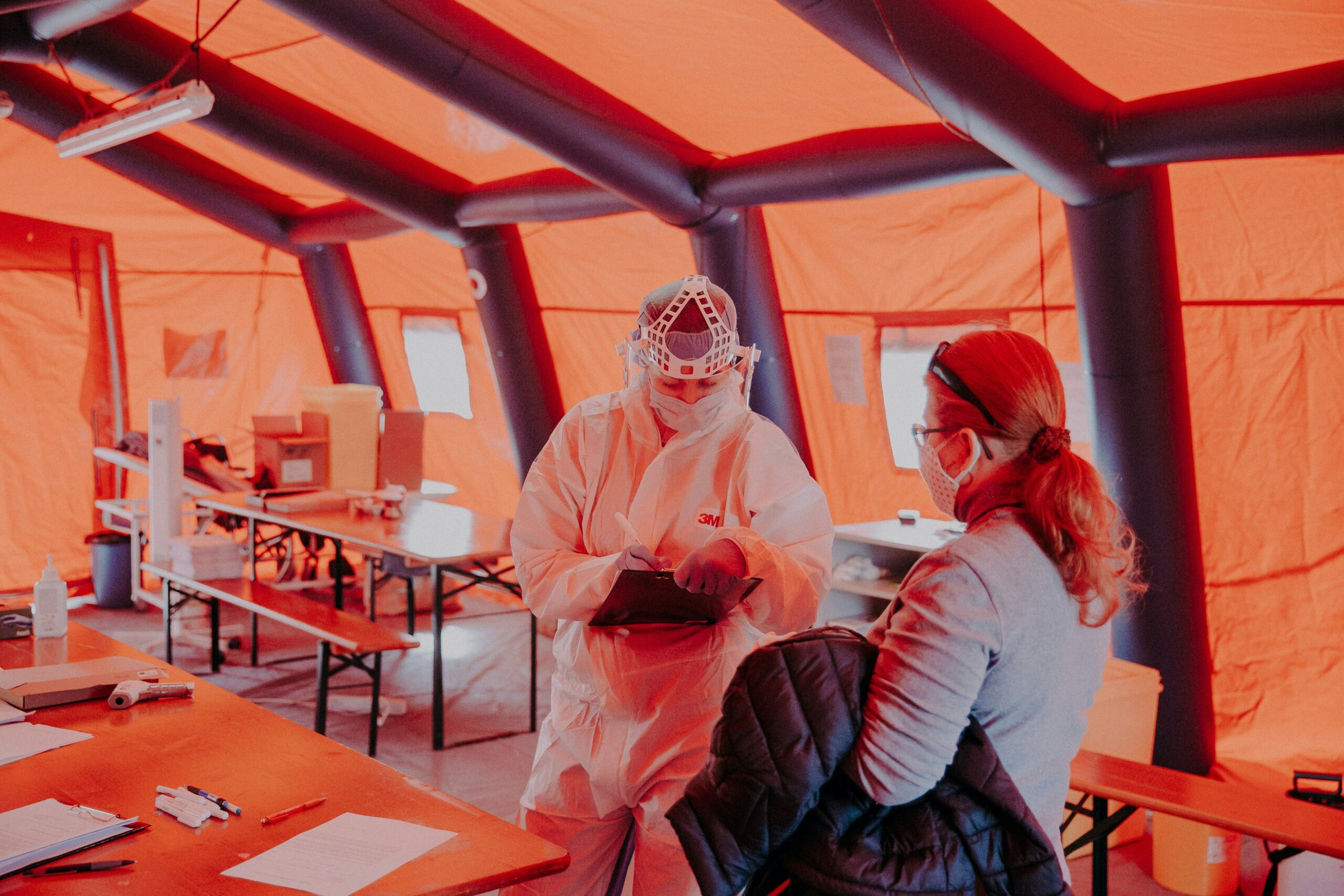How Will You Test the Presence of Alkene? Simple Methods with Bromine Water & KMnO₄ Explained
When I first learned about alkenes in chemistry class I was fascinated by how a simple test could reveal the presence of these unsaturated hydrocarbons. Alkenes play a big role in organic chemistry and spotting them quickly is essential for many experiments and reactions.
I’ve found that knowing how to test for alkenes not only helps in the lab but also deepens my understanding of chemical properties. There are a few classic methods that make this process quick and reliable. If you’re curious about how to confidently identify an alkene in your sample you’re in the right place.
Understanding Alkenes and Their Importance

Alkenes contain at least one carbon-carbon double bond. These hydrocarbons have the general formula CₙH₂ₙ, where n is greater than or equal to 2. Ethene, propene, and butene represent common examples of alkenes found in laboratory testing. The double bond gives alkenes distinct chemical properties compared to alkanes.
I use the reactivity of alkenes in many chemical syntheses. Their double bond enables efficient addition reactions, which makes them valuable in producing polymers, alcohols, and other organic compounds. Many processes, such as the production of plastics like polyethylene and the synthesis of detergents, rely on alkene chemistry.
Quickly detecting alkenes helps me predict how compounds will behave in chemical reactions. Since alkenes react differently than other hydrocarbons, confirming their presence is essential for planning experiments and analyzing reaction outcomes.
Common Physical Properties of Alkenes
| Property | Typical Value/Description | Example |
|---|---|---|
| Formula | CₙH₂ₙ | C₂H₄ (Ethene) |
| Bond Type | At least one double C=C bond | Propene |
| Reactivity | Undergoes addition reactions readily | Butene |
| Physical State | Colorless gases or liquids at room temperature | 1-Butene |
Alkenes remain important in fields such as pharmaceuticals, materials science, and industrial chemistry, where their presence determines the function and value of many products.
Common Methods to Test the Presence of Alkene
Alkene detection relies on rapid chemical tests that give observable results within seconds to minutes. I use these standard methods to identify alkenes and distinguish them from saturated hydrocarbons.
Bromine Water Test
Bromine water serves as a primary reagent to confirm alkenes by exploiting their electrophilic addition tendency. I add a few drops of orange bromine water to the sample and shake the mixture. If an alkene is present, the solution loses its color due to the reaction that forms a colorless dibromo compound. Saturated compounds like alkanes don’t react, so the brown-orange color stays.
| Test | Observation with Alkene | Observation Without Alkene | Reaction Type |
|---|---|---|---|
| Bromine Water | Decolorization observed | No decolorization | Electrophilic Addition |
Baeyer’s Test (Potassium Permanganate Test)
Baeyer’s test uses dilute, cold KMnO₄ as an oxidizing agent to detect alkenes. I add potassium permanganate solution and observe the reaction. Presence of an alkene changes the purple solution to colorless or brown, indicating the formation of a diol and manganese dioxide precipitate. Alkanes, aromatic hydrocarbons, and most other functional groups don’t decolorize KMnO₄ under these conditions.
| Test | Observation with Alkene | Observation Without Alkene | Reaction Type |
|---|---|---|---|
| Baeyer’s (KMnO₄) | Color fades/brown ppt forms | Purple color remains | Oxidation |
Step-By-Step Procedure for Testing Alkenes

I test alkenes by following precise steps that reliably show the presence of carbon-carbon double bonds. Each method uses direct visual changes, ensuring clear identification.
Preparing the Sample
I select liquid or gaseous organic compounds, including ethene, propene, or butene. I transfer 1–2 mL of the test sample into a clean, dry test tube using a pipette or dropper. I ensure that the sample is colorless or pale, as strong colors may interfere with later observations.
| Sample | Physical State | Testing Volume (mL) |
|---|---|---|
| Ethene | Gas | 1.0 |
| Propene | Gas | 1.5 |
| Butene | Liquid | 2.0 |
Performing the Bromine Water Test
I pour 1–2 mL of freshly prepared orange bromine water into the test tube containing my sample. I gently shake the tube for uniform mixing. I observe whether the orange color disappears rapidly. If the color fades within seconds, the sample contains an alkene, as the reaction breaks the bromine bond and forms a vicinal dibromide. I note that saturated hydrocarbons like alkanes cause no observable color change.
| Test Solution | Initial Color | Reaction with Alkene | Reaction with Alkane |
|---|---|---|---|
| Bromine Water | Orange | Decolorizes | Remains Orange |
Conducting the Baeyer’s Test
I add 1–2 mL of cold, dilute potassium permanganate (KMnO₄) solution to a new portion of my sample in a fresh test tube. I shake gently, ensuring even contact. I watch for the disappearance of the purple hue, replaced by a colorless or brown solution with a brown precipitate of manganese dioxide (MnO₂). This outcome confirms the alkene’s oxidative cleavage and formation of a diol. If the color persists, the compound contains no alkene.
| Test Solution | Initial Color | With Alkene | With Alkane |
|---|---|---|---|
| KMnO₄ (dilute) | Purple | Colorless/Brown | Remains Purple |
Both tests provide fast, direct evidence for alkene presence using distinctive color changes visible within moments.
Precautions and Safety Tips
Wearing protective equipment ensures personal safety when testing for alkenes with chemical reagents. I use safety goggles, a lab coat, and nitrile gloves, since both bromine water and potassium permanganate solutions can irritate skin and eyes. Working in a well-ventilated area prevents inhalation of harmful vapors, especially with volatile organic compounds like ethene or propene.
Handling chemicals like bromine water requires careful attention, because direct contact or inhalation leads to health hazards. I store all reagents in clearly labeled containers and keep them away from flame sources due to the flammable nature of many organic compounds involved in alkene tests. I avoid eating, drinking, or applying cosmetics in the lab area to reduce chemical exposure risks.
Disposing of waste safely maintains laboratory hygiene and environmental standards. I collect used bromine and potassium permanganate solutions as hazardous waste, following local disposal regulations rather than pouring them down the drain. Immediate cleaning of any spills with suitable neutralizing agents helps prevent accidental exposure.
| Step | Hazard/Concern | Precautionary Measure |
|---|---|---|
| Handling bromine water | Skin, eye, and respiratory irritant | Wear gloves, goggles, mask; ventilate area |
| Using potassium permanganate | Staining, oxidation, skin hazard | Use lab coat, flush spills with water |
| Working with sample alkenes | Flammable vapors, toxic fumes | Keep away from flames, work under fume hood |
| Chemical waste disposal | Environmental harm | Collect in labeled waste bottles, dispose per regulations |
Interpreting Test Results
Interpreting test results for alkene detection requires observing direct color changes during the Bromine Water and Baeyer’s Tests. My observations for both methods rely on recognized, rapid reactions distinct to alkenes.
Bromine Water Test Results
- Decolorization signals alkene presence because bromine adds across the double bond, breaking the color. Orange fading to colorless occurs within seconds for compounds like ethene and propene.
- No color change indicates a saturated compound, such as alkanes, which resist addition and maintain solution color.
Baeyer’s Test Results
- Color shift from purple to colorless or brown confirms alkene oxidation and the dihydroxylation reaction. I note the appearance of a brown precipitate (MnO₂) as added evidence in samples containing alkenes like butene.
- Retention of the original purple color means the sample likely lacks carbon-carbon double bonds.
Table: Quick Reference for Visual Test Results
| Test Name | Sample Type | Alkene Present | Alkene Absent |
|---|---|---|---|
| Bromine Water | Ethene, Propene | Orange → Colorless | Orange persists |
| Baeyer’s (KMnO₄) | Butene, Cyclohexene | Purple → Colorless/Brown | Purple persists |
Common Observational Pitfalls
- Delayed or incomplete color change may result from low alkene concentration or contaminated reagents.
- False positives sometimes appear if the sample contains reducing agents other than alkenes; accurate identification depends on sample purity.
When I ensure correct reagent preparation and clean sample handling, both Bromine Water and Baeyer’s Tests provide reliable, rapid confirmation of alkene presence based on clear, observable outcomes.
Conclusion
Testing for alkenes is a skill I find both practical and fascinating. With just a few drops of bromine water or potassium permanganate I can get instant visual confirmation that helps guide my next steps in the lab.
Mastering these techniques not only streamlines my organic chemistry work but also deepens my understanding of how these reactive molecules shape the world around us.
Frequently Asked Questions
What is an alkene?
An alkene is a type of unsaturated hydrocarbon containing at least one carbon-carbon double bond and has the general formula CₙH₂ₙ.
Why is it important to detect alkenes quickly in organic chemistry?
Identifying alkenes quickly helps predict chemical reactivity, plan experiments, and accurately analyze results, which is essential in both laboratory and industrial settings.
What are common examples of alkenes?
Common examples include ethene (ethylene), propene (propylene), and butene. These molecules feature one or more carbon-carbon double bonds.
How can you test for the presence of alkenes?
The most common tests are the Bromine Water Test and Baeyer’s (Potassium Permanganate) Test, both of which show clear visual changes when alkenes are present.
What happens in the Bromine Water Test for alkenes?
When orange bromine water is added to an alkene, it becomes colorless, indicating an electrophilic addition reaction and confirming the alkene’s presence.
What does the Baeyer’s Test show for alkenes?
Upon adding dilute, cold potassium permanganate (KMnO₄), the solution changes from purple to colorless or brown if an alkene is present, signaling oxidation.
Are there any safety precautions for alkene testing?
Yes. Always wear safety goggles, lab coats, and gloves; handle chemicals in a well-ventilated area; and follow proper waste disposal and storage guidelines.
Why might the test results be unclear or delayed?
Unclear or delayed color changes can result from low alkene concentration, contaminated samples, or insufficient mixing. Ensure sample purity and follow procedures closely.
How do you interpret the test results for alkene detection?
A decolorized bromine water or a color change from purple to colorless/brown in potassium permanganate confirms the presence of alkenes in your sample.
In which fields are alkenes especially important?
Alkenes are key in pharmaceuticals, materials science, and industrial chemistry. Their unique reactivity makes them vital for making polymers, alcohols, and other organic products.
